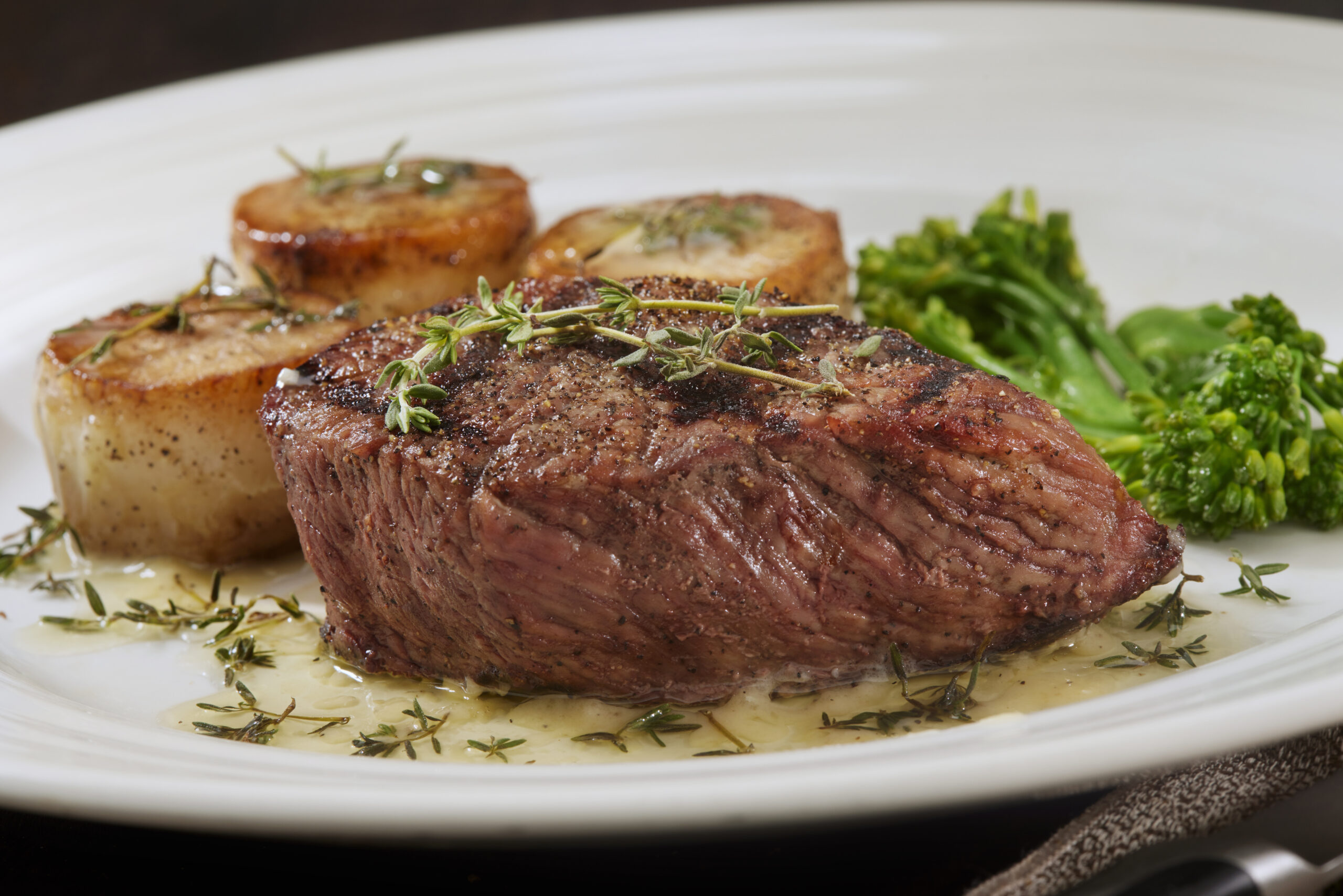You can purchase Harris Ranch Beef in a variety of cuts, each with distinct characteristics and flavors. Our Fresh Beef Cuts Guide shows where each cut comes from.
Ribeye steak comes from the rib portion of the beef carcass. One of the most popular steaks, ribeye is boneless, juicy, and extremely flavorful because of its rich marbling. With the rib bone attached, the ribeye becomes a rib steak that has even more exceptional flavor.
New York steak comes from the loin just behind the rib area. Hearty and prized for its distinctively rich flavor, this steak became associated with New York in 1937 when Delmonico’s Restaurant first opened in Manhattan.
Porterhouse steak comes from the loin portion of the beef carcass. Perfect for hearty eaters, Porterhouse is the king of the T-bone steaks. It provides a prized and plentiful portion of tender filet mignon on one side of the T-shaped bone, and the unmatched flavor of a strip steak on the other side.
T-bone steak also comes from the beef loin. Known for the same T-shaped bone as the Porterhouse, a T-bone combines the savory flavor of the strip steak on one side with a tender, juicy, yet somewhat smaller portion of the filet on the other.
Filet Mignon is hand carved from the tenderloin, the most tender cut of beef. This elegant cut has exceptional, mouthwatering taste and melt-in-your-mouth buttery tenderness.

